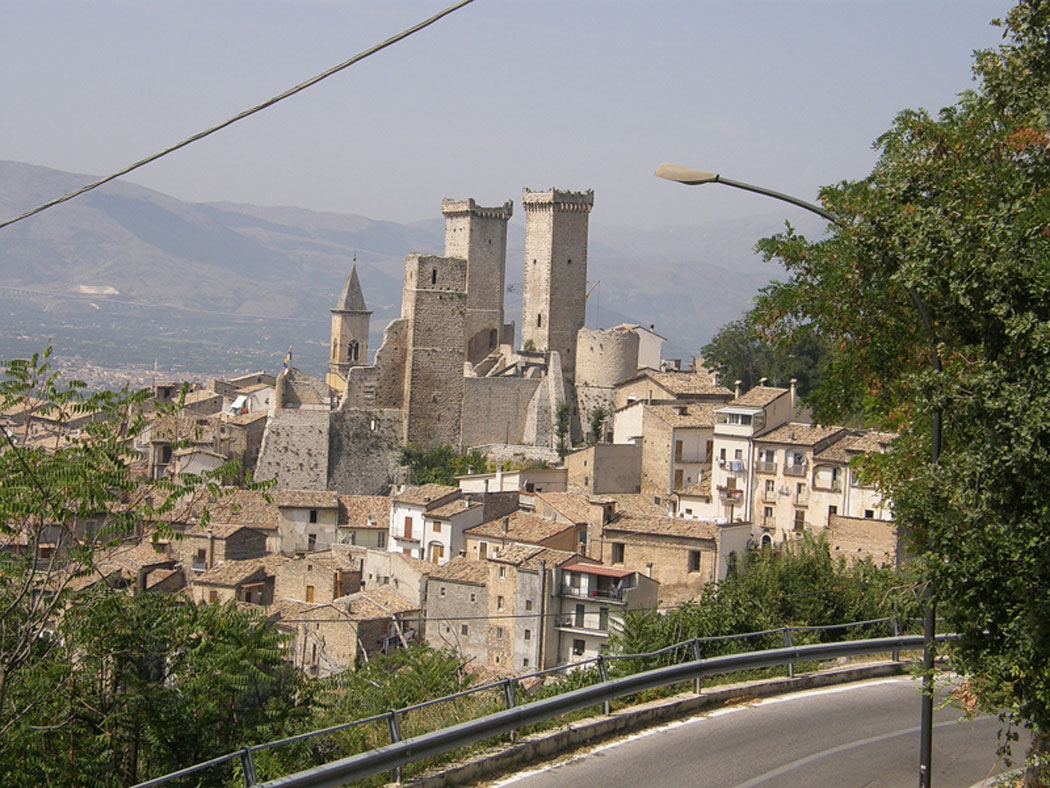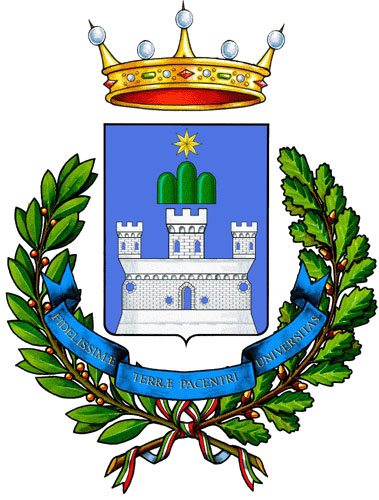

Pacentro is an evocative Abruzzo village in the Majella National Park, in the province of L'Aquila. Perched on the hills, on the slopes of the Morrone Mountains, it is one of the most beautiful villages in Italy. Its historic centre is a succession of fascinating glimpses, with the cobbled alleys that climb up the town like a stone snake, and then, at night, it takes on a magical dimension.
Legend has it that its name derives from Pacinus, a Trojan hero who, after leaving Aeneas on the banks of the Tiber, made his way to Sannio and arrived at the foot of Monte Morrone where he founded Pacentro.
Certainly the territory was inhabited since prehistoric times and the rock paintings found in the cave of Colle Nusca, not far from Pacentro, where the men of the caves have traced with the red ochre graffiti depicting eight men armed with bows and arrows, hunting scenes from several thousand years ago.
It was then inhabited by the Samnites, the proud and bellicose Italic people, eventually beaten by the Romans after three wars in about 350 BC. From the Roman period there are remains of factories, tombstones and sepulchres.
After the fall of the Roman Empire and the arrival of the barbarians, Pacentro, like many other Abruzzese towns, underwent the phenomenon of the castle: to escape the barbarian raids, the populations left the plains and sought better defensible places, such as the high ground on which Pacentro arose, and they began to build strongholds.
During the domination of the Lombards, who arrived in Italy following their king Alboino in 568 AD, the whole territory of Abruzzo was divided between the two duchies of Spoleto and Benevento and Pacentro became part of the Duchy of Spoleto.
The town is mentioned for the first time in the 8th century, when the Dukes of Spoleto, Lupo and Ildebrando donated the church of San Leopardo to the powerful Benedictine monastery of San Vincenzo al Volturno.
After the fall of the Lombards, the invasions and raids of the Saracens and Normans began, especially in the nearby Peligna Valley. In defense of the town and the inhabitants of the area, the castle was enlarged and strengthened in the 10th - 11th century, around which the first houses and churches began to rise and the economy of the village developed.
But these are not the only towers in the village: there are many others, some cut short, others in ruins, but which all together form a forest.
The Caldora Castle was part, together with the castles of Pettorano, Introdacqua, Anversa, Bugnara, Popoli and Roccacasale, of the complex defensive system of the Peligna Valley. In about 1170, the Catalogue of the Barons of the Kingdom of Naples attests that Pacentro is inhabited by 48 families.
Between 1270 and 1464 Pacentro was a fief of the Caldora family, an ancient and noble family of knights, originally from Provence in south-eastern France. The Caldora were related to the French royal family of the Angevins and had followed King Charles I of Anjou to take part in the conquest of the Kingdom of the Two Sicilies.
Cantelmo - Caldora Castle which still today dominates the town from above, was enlarged with its square towers, built in the 14th century, and its three round towers, added in the 15th century, surrounded by the typical moat.
When the struggles between the Aragonese and the Angevins (Spanish and French) for the succession to the Kingdom of Naples began to rekindle, Pacentro became one of the cornerstones of the Angevin fight against the Aragonese, who were instead supported by nearby Sulmona.
During the period in which Giacomo Caldora ruled, Pacentro found a way to develop and also experienced a period of relative well-being. But the defeat of the Angevins in 1464 also overwhelmed his son Antonio Caldora who lost all his lands, including Pacentro.
Between 1483 and 1612 the Pacentro fiefdom became the property of the Naples branch of the Orsini family, one of the oldest and most important noble families of Rome, Italy and Europe. Because of the advent of the Spanish Aragonese dynasty, the new feudal lords made substantial changes to the Caldora Castle.
Between 1613 and 1624 Pacentro was a fiefdom of Captain Domenico Antonio De Sanctis who held positions of very high importance in the local feudal landscape but was greatly indebted. In 1626 Pacentro was split up by creditors and became the property of the Colonna family.
In 1644 the Royal Court of Naples sold the fiefdom to Maffeo Barberini, who was then succeeded by the Marquis Recupito di Raiano, who held it until the abolition of feudalism, commissioned by Napoleon in 1806.
After the unification of Italy, in 1861, many episodes of banditry were recorded in Pacentro and the first great waves of emigration began which caused a strong depopulation. The departures would occur at the beginning of the century and then between the 1940s and 1960s.
Pacentro is also very famous abroad, especially in the United States. In fact, not only is it the townof origin of many Italian emigrants to America, but it has also given birth to the grandparents of Madonna.
Every year, in the third week of August, for six days Pacentro is transformed into the village that it was during the rule of the Caldora princes. The historical reenactment of the Caldoreschi transports everything and everyone to the year 1450, recalling the historical events that occurred in Pacentro: fighting, investiture of knights, duels, bonfires and sabbath, or witches' conferences. Particularly striking is the historical procession that winds through the streets of the centre set up in fifteenth-century scenarios with dozens of figures in period costumes.








Follow us